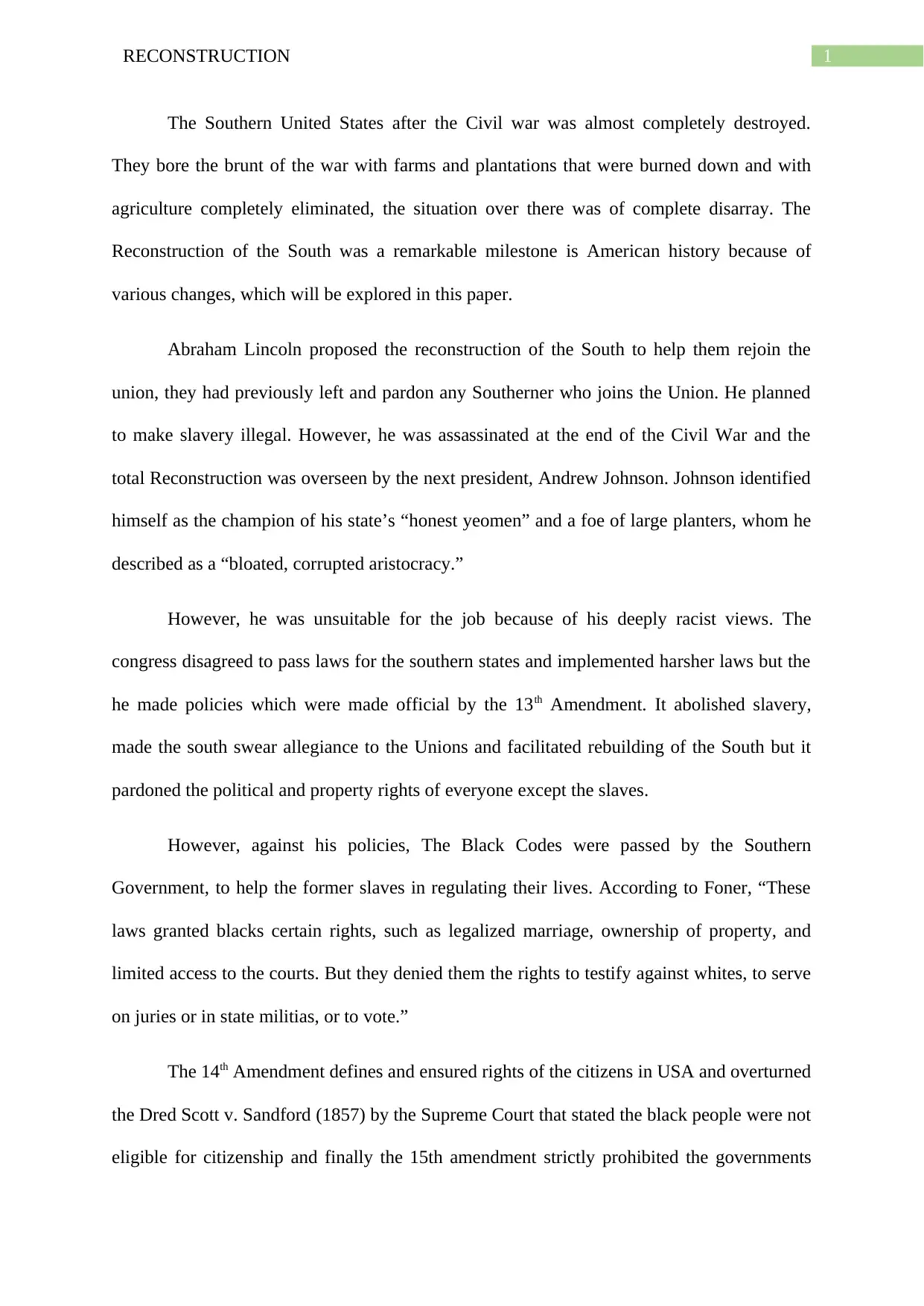Reconstruction Report: Impact of the Civil War on American Society
VerifiedAdded on 2022/12/19
|4
|614
|1
Report
AI Summary
This report examines the Reconstruction era following the American Civil War, focusing on the challenges and transformations that reshaped American society. It discusses Abraham Lincoln's initial plans, the role of President Andrew Johnson, and the impact of the 13th, 14th, and 15th Amendments. The report highlights the Black Codes, the rise of the Ku Klux Klan, and the efforts of the Redeemers to restore white supremacy. It also references Eric Foner's work, emphasizing the divisions and unrest during the Gilded Age and the ongoing struggle for freedom and equality. The report underscores the complexity of bridging cultural divisions and achieving the complete abolition of slavery, which was a long-term process.
1 out of 4











![[object Object]](/_next/static/media/star-bottom.7253800d.svg)